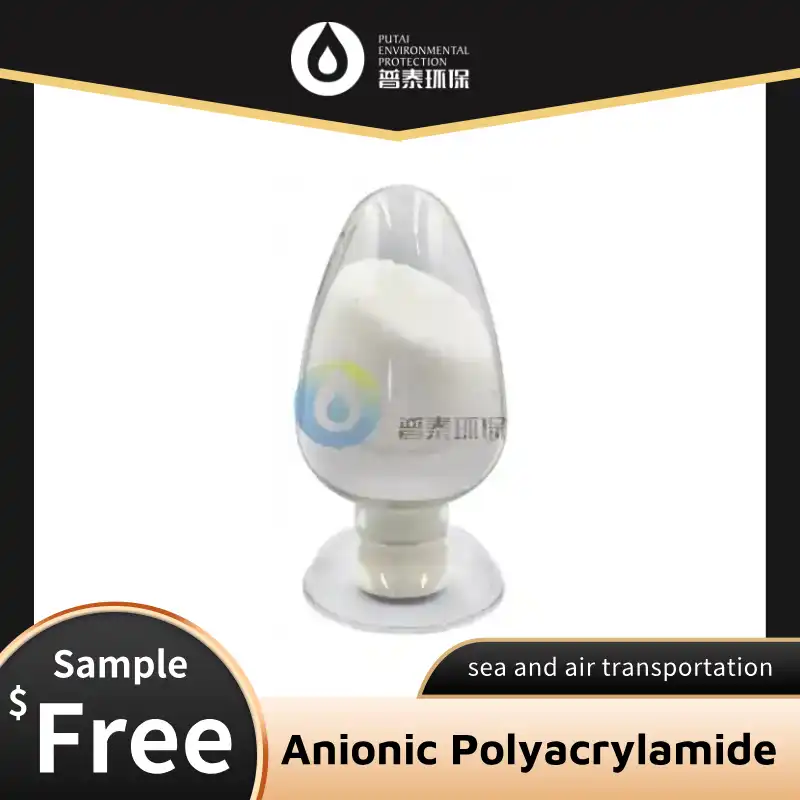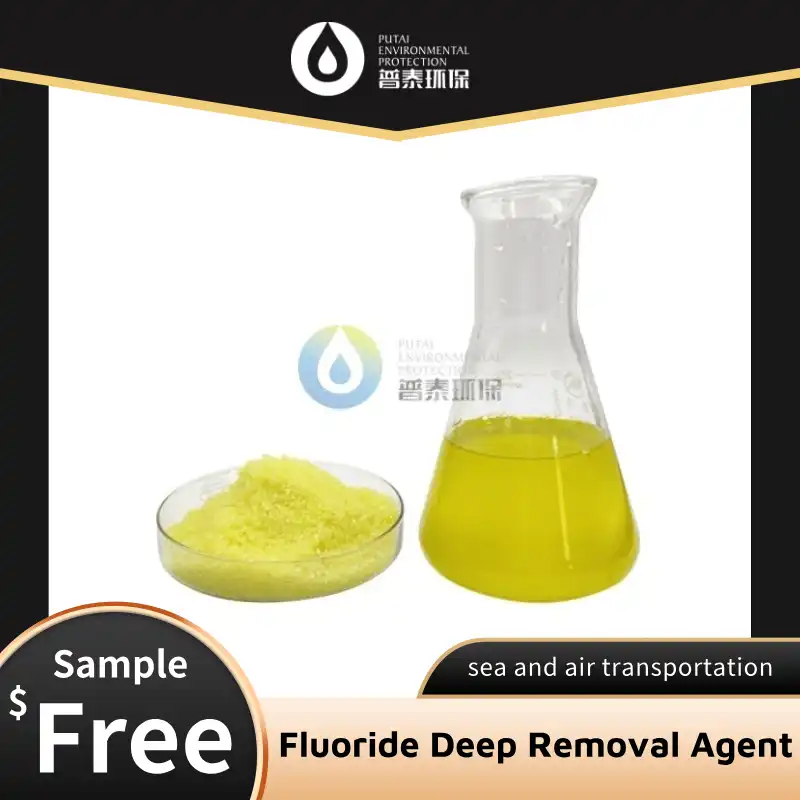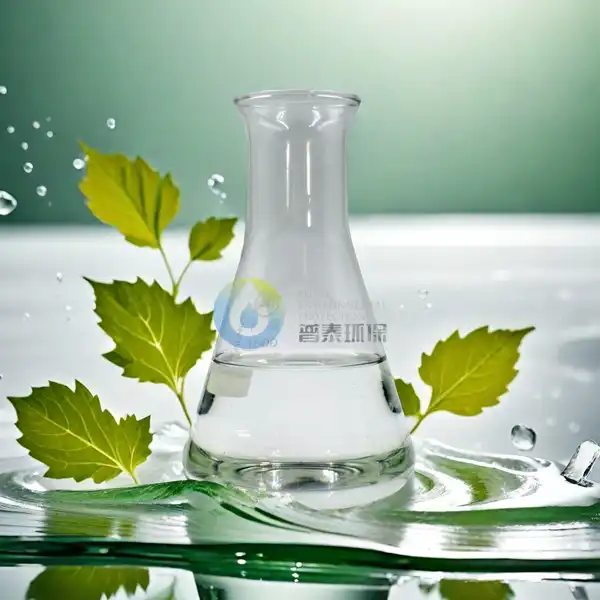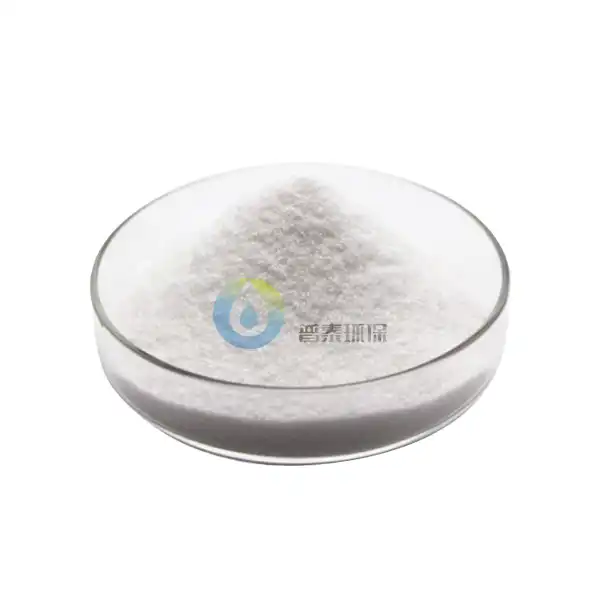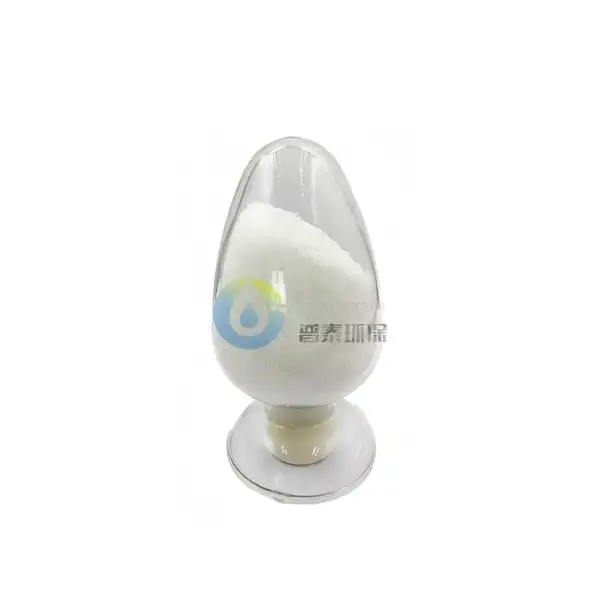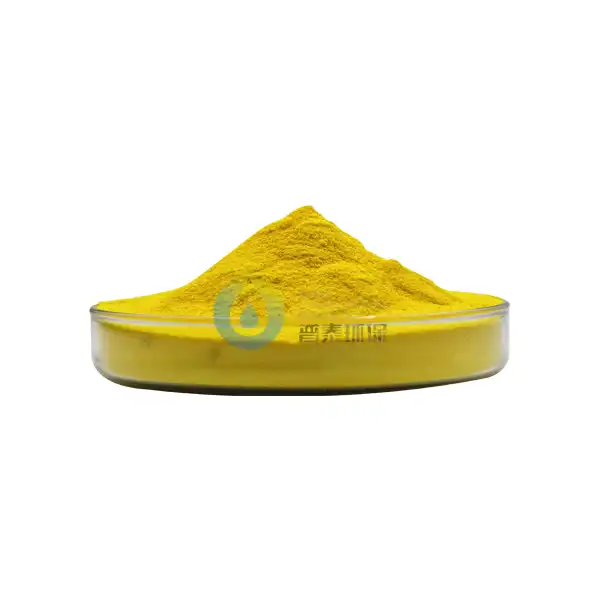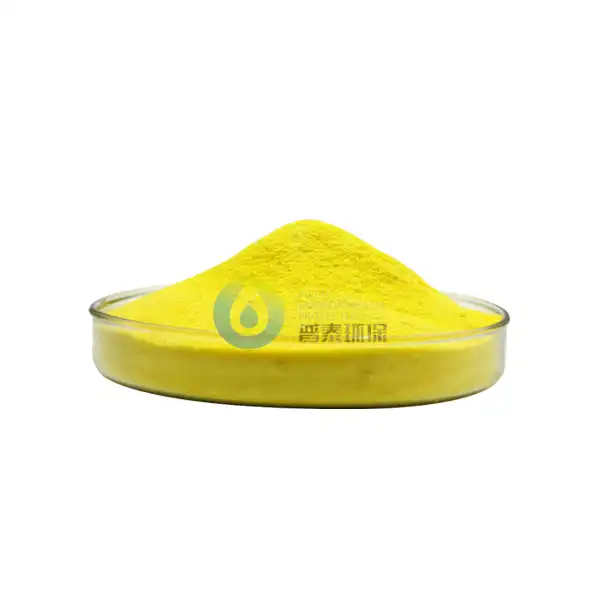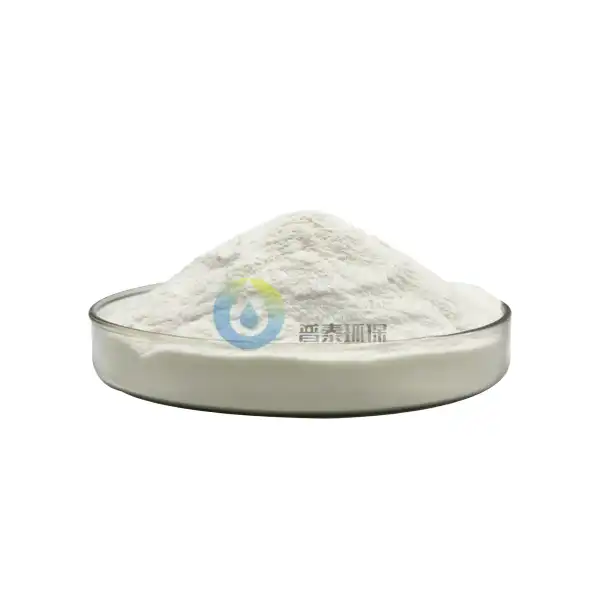How Do Fluorine Remover Agents Reduce Fluoride Levels?
Excessive fluoride in water sources poses significant health and environmental challenges worldwide. Fluorine Remover Agents have emerged as effective solutions to combat this issue, offering specialized chemical interventions that target and eliminate fluoride ions from water systems. These agents employ various mechanisms to bind with fluoride molecules, facilitating their removal through precipitation, adsorption, or ion exchange processes.
What makes Fluorine Remover Agents effective for water treatment?
The chemical composition of Fluorine Remover Agents
Fluorine Remover Agents typically consist of aluminum compounds, activated alumina, calcium-based materials, or specialized polymeric compounds designed to interact specifically with fluoride ions. The chemical structure features positively charged components that naturally attract the negatively charged fluoride ions in water. Aluminum-based Fluorine Remover Agents contain hydroxide groups that form strong bonds with fluoride, creating insoluble compounds that can be physically separated from water. The effectiveness largely depends on specific chemical formulation, with modern products incorporating multiple active ingredients to enhance performance across various water conditions. Manufacturers develop proprietary blends that optimize fluoride removal while minimizing interference from other dissolved minerals or organic compounds.
Adsorption mechanisms of premium Fluorine Remover Agents
High-quality Fluorine Remover Agents utilize sophisticated adsorption mechanisms to capture fluoride ions from water solutions. The process involves fluoride ions adhering to the surface of agent particles through electrostatic attraction and chemical bonding. Premium Fluorine Remover Agents feature enhanced surface area, often achieved through specialized manufacturing processes that create microporous structures. These microscopic pores increase the contact area between the agent and contaminated water, allowing for more efficient adsorption. Leading products can remove up to 95% of dissolved fluoride under optimal conditions. Advanced Fluorine Remover Agents maintain their adsorption efficiency across a wider pH range, making them suitable for diverse water treatment scenarios.
Reaction kinetics and removal efficiency factors
A Fluorine Remover Agent's effectiveness is influenced by its reaction kinetics – how quickly it binds with fluoride ions. Key factors include water temperature, contact time, agent dosage, and initial fluoride concentration. Most Fluorine Remover Agents exhibit rapid initial binding, with 60-70% of fluoride removal occurring within the first few minutes of contact. However, maximum removal efficiency often requires extended contact periods ranging from 30 minutes to several hours. Modern Fluorine Remover Agents accelerate these reaction kinetics through catalytic components or nano-scale active ingredients that increase reaction surface area. Optimal dosage calculations must consider these factors to achieve target fluoride levels while maintaining cost-efficiency.
How do different types of Fluorine Remover Agents compare in performance?
Aluminum-based vs. calcium-based Fluorine Remover Agents
Aluminum-based and calcium-based Fluorine Remover Agents operate through different mechanisms. Aluminum-based agents like aluminum sulfate and polyaluminum chloride work through coagulation and flocculation, forming aluminum hydroxide precipitates that adsorb fluoride ions. They typically achieve removal efficiencies of 70-85% under optimal conditions and work best in pH ranges of 5.5-7.5. Calcium-based Fluorine Remover Agents function through precipitation mechanisms, forming calcium fluoride compounds with low solubility. These agents can achieve 80-90% removal efficiency and operate effectively in alkaline conditions (pH 8-12). The choice between these types depends on existing infrastructure, pH conditions, and the presence of competing ions. Aluminum-based agents often integrate more seamlessly with conventional treatment processes, while calcium-based agents may require additional pH adjustment but can achieve higher removal rates.
Activated media Fluorine Remover Agents and their adsorption capacity
Activated media Fluorine Remover Agents utilize highly porous materials such as activated alumina, bone char, and modified clay minerals. These media-based agents provide exceptional surface area-to-volume ratios, with some products offering specific surface areas exceeding 300 m²/g. Premium activated alumina agents can remove up to 1.5 mg of fluoride per gram of media before requiring regeneration. Most can be regenerated through chemical treatment processes that restore 80-95% of their original capacity, improving cost-effectiveness over time. These agents demonstrate excellent selectivity for fluoride ions even with competing anions like sulfate and chloride. Their operational lifetime typically ranges from 6-24 months between regenerations, depending on water quality and treatment volume.
Innovative polymer-based Fluorine Remover Agents
Polymer-based Fluorine Remover Agents represent a significant advancement in fluoride removal technology. These synthetically engineered polymers contain specialized functional groups designed to target fluoride ions with high selectivity. They can be customized at the molecular level to optimize binding affinity, reaction speed, and selectivity. Some proprietary formulations incorporate multiple binding sites within a single polymer chain, increasing removal capacity. These agents demonstrate several advantages, including rapid kinetics (achieving 90% removal within 10-15 minutes), effectiveness across a broader pH range (4-9), and reduced sensitivity to temperature fluctuations. Many can be applied as liquid solutions, allowing for precise dosing and easier integration into existing systems. Their primary limitation remains higher production cost, though this is often offset by enhanced efficiency and reduced dosage requirements.
How can Fluorine Remover Agents be optimized for specific water conditions?
pH optimization for maximum Fluorine Remover Agent performance
The performance of Fluorine Remover Agents is significantly influenced by water pH, making optimization critical for maximum efficiency. Each agent type has a specific pH range where binding capacity peaks. Aluminum-based agents typically perform optimally in slightly acidic to neutral conditions (pH 5.5-6.5), while calcium-based agents work best in more alkaline environments (pH 8.0-11.0). At lower pH values, hydrogen ions can compete with fluoride for binding sites, while at higher pH values, hydroxide ions may interfere with adsorption. Water treatment systems can incorporate automatic pH adjustment mechanisms to maintain optimal conditions. This optimization can increase removal efficiency by 15-25% compared to applications where pH is not controlled.
Dosage calculation methods for Fluorine Remover Agents
Determining appropriate Fluorine Remover Agent dosage requires balancing treatment effectiveness with operational costs. Basic approaches involve jar testing, where different concentrations are applied to water samples to create dose-response curves. More sophisticated methods use mathematical models incorporating variables like initial fluoride concentration, target levels, water temperature, pH, competing ions, and agent properties. These models often follow modified Freundlich or Langmuir isotherms. Advanced facilities may implement automated dosing systems based on real-time fluoride monitoring. Proper calculation typically results in application rates ranging from 10-50 mg/L for moderately contaminated water to 50-150 mg/L for heavily contaminated sources.
Contact time and mixing requirements for Fluorine Remover Agents
Fluorine Remover Agent efficacy depends on adequate contact time and proper mixing techniques. Most high-quality agents require 20-45 minutes of contact time to achieve 80-90% of their maximum removal capacity, following a logarithmic curve with diminishing returns after a certain period. Proper mixing occurs in two phases: an initial rapid mix (1-3 minutes at 100-300 rpm) ensuring uniform distribution, followed by slower flocculation mixing (15-30 minutes at 20-50 rpm) that promotes floc growth. Advanced systems implement baffled mixing chambers or hydraulic optimization to maximize agent-water contact while minimizing energy consumption. Optimizing both contact time and mixing conditions can improve performance by up to 30%.
Conclusion
Fluorine Remover Agents represent a sophisticated solution for addressing fluoride contamination in water systems. Through chemical binding, adsorption, and precipitation mechanisms, these specialized compounds effectively reduce fluoride concentrations to safe levels. The diverse range of agent types—from aluminum and calcium-based to activated media and polymer formulations—offers water treatment professionals multiple options to address specific water conditions. Optimizing pH, dosage, and contact time significantly enhances removal efficiency, making these agents an indispensable tool in modern water treatment strategies.
Xi'an Putai Environmental Protection Co., Ltd. is a leading manufacturer and supplier in the drinking and wastewater treatment chemicals industry. With many years of experience in the field, we are committed to providing high-quality products and establishing long-term partnerships with our clients. Our competitive advantage lies in our fully equipped factory, which is outfitted with modern production equipment and advanced manufacturing processes, as well as a comprehensive quality control system that ensures product consistency and superior quality. Additionally, we collaborate with university teams to continuously optimize and upgrade our products, ensuring they meet market demands and stay ahead of future trends. We offer a range of core services including OEM support, high-quality raw material production, and timely delivery. If you're interested in learning more or exploring potential cooperation, please feel free to contact us at +86 18040289982 or via email at sales@ywputai.com. We look forward to the opportunity to work with you.
References
1. Johnson, M. R., & Williams, K. L. (2023). Advanced fluoride removal technologies in drinking water treatment. Journal of Water Treatment and Purification, 45(3), 287-301.
2. Chen, X., Zhang, Y., & Li, H. (2022). Comparative analysis of aluminum and calcium-based defluoridation agents: Mechanism and efficiency. Environmental Science & Technology, 56(8), 4675-4689.
3. Patel, S., & Nguyen, T. H. (2023). Adsorption kinetics of fluoride removal using activated alumina: A comprehensive review. Water Research, 218, 118906.
4. Smith, J. B., Garcia, R. L., & Wang, Y. (2021). Novel polymer-based fluorine remover agents: Synthesis, characterization and application. Journal of Applied Polymer Science, 138(12), 50182.
5. Liu, Z., Rahman, A., & Teng, S. (2022). Optimization of pH and dosage parameters for efficient fluoride removal from groundwater. Journal of Environmental Chemical Engineering, 10(1), 106845.
6. Zhang, Q., Anderson, P., & Wilson, M. (2021). Contact time effects on fluoride removal efficiency: Implications for water treatment plant design. Water Science and Technology, 83(5), 1110-1123.

